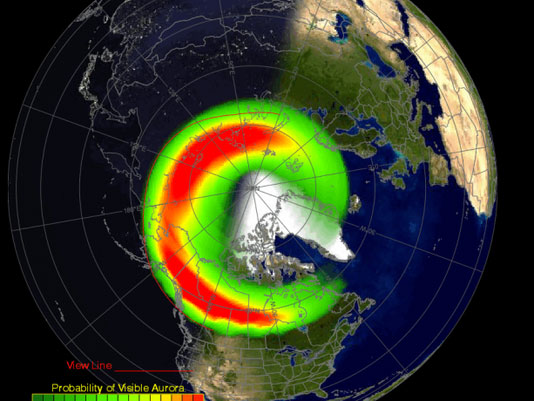1789
http://www.messier.seds.org/xtra/Bios/wherschel.htmlWilliam Herschel (1738-1822) discovers the sixth moon of Saturn, Enceladus - and would soon discover a seventh.
1845
http://www.onthisday.com/events/august/28The first issue of Scientific American is published. I included this one because I would love to work for a magazine like this one day. In my first blog post, I talked about my passion for both learning and writing and how a career like this would enable me to do both!
1859
http://www.onthisday.com/events/august/28
The geomagnetic solar storm, known as The Storm of 1859, allows the Aurora Borealis to be so bright so as to be seen over parts of the U.S., Europe, and even Japan. Refer to the image below (critica.com) for where the Northern Lights would typically be seen - imagine it spreading all the way down to Japan!! Also, click this link to read excerpts of what many global news sources had to say about the sight.
The geomagnetic solar storm, known as The Storm of 1859, allows the Aurora Borealis to be so bright so as to be seen over parts of the U.S., Europe, and even Japan. Refer to the image below (critica.com) for where the Northern Lights would typically be seen - imagine it spreading all the way down to Japan!! Also, click this link to read excerpts of what many global news sources had to say about the sight.
"The Storm of 1859 was the first event recorded by humans from a truly global perspective." (solarstorms.org)
1925
A meteorite falls on the Dutch island Schouwen in late morning. More details here: https://langbrom.home.xs4all.nl/ellemeng.html1964
Weather satellite Nimbus 1 is launched from Vandenberg Air Force Base. This first second-generation meteorological satellite lasted a little less than a month. learn more about the craft here: https://nssdc.gsfc.nasa.gov/nmc/spacecraftDisplay.do?id=1964-052A1993
Spacecraft Galileo flies by Ida, sending back the first detailed images of an asteroid. Read the report here: http://adsabs.harvard.edu/full/1994IAUS..160..357C2009
https://www.nasa.gov/mission_pages/shuttle/shuttlemissions/sts128/main/index.htmlSpace shuttle Discovery (STS-128) is launched to the ISS at 11:59 pm EDT with seven crew members aboard.
For a complete list of today’s Space History, see http://www.astronautix.com/a/august28.html


In 1789 how did Hershel see the moons orbiting Saturn ?
ReplyDelete